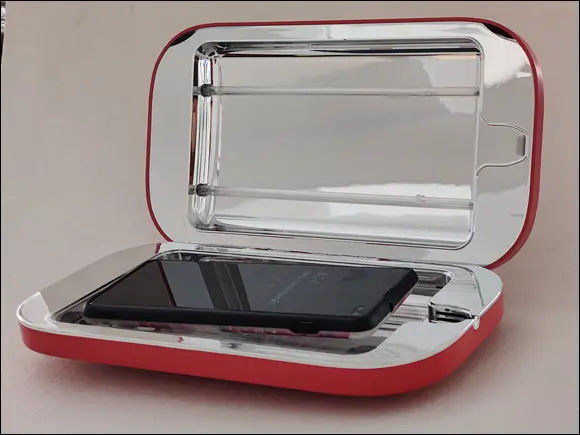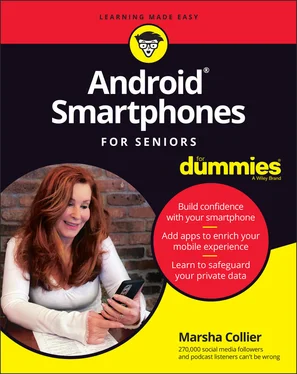“**** member benefits are provided by third parties, not by **** or its affiliates. Providers pay a royalty fee to **** for the use of its intellectual property. These fees are used for the general purposes of ****. Some provider offers are subject to change and may have restrictions. Please contact the provider directly for details.”
LOCKED OR UNLOCKED PHONES: WHAT’S THE DIFFERENCE?
While shopping for a smartphone, you may see references to locked and unlocked phones. Previously, whenever you bought a phone from a mobile carrier like AT&T, the carrier would put a software lock on your phone so that you could not switch to a competing carrier, sell your phone, or just give it to a friend. An unlocked phone is a more valuable asset than one that’s locked.
Now, customers can legally unlock their carrier-locked phones with no drawbacks. Unlocking doesn’t happen by default, but carriers must give customers a way to unlock them. Depending on the carrier, the unlocking process can be easy or annoying. Either way, it can be done — just contact your provider and ask for the unlock procedure. Note: The carrier won’t unlock your phone until you pay it off.
You Need a Few Accessories, Too
As with most big-ticket purchases, you probably need to buy a few accessories to realize full benefit. For any item that you plan to use over several years, you need to get the right accessories to extend the life of the device.
Power charging blocks — volts and watts matter
Determining whether you have the correct phone charger used to be no big deal. I studied power charging for a few years and found that most of the charging blocks that are supplied with phones delivered the proper charge. This properly matched charger provided, at no extra cost, the exact supply of volts and watts that the phone needed for optimal charging. (The volts and watts of each power block are printed on the sides of the blocks, in miniscule letters.)
Unfortunately, a current trend of manufacturers is to withhold the charging block from the purchased phone, as noted in the later sidebar “ Who’s on (or off) the no-charger bandwagon?”
Behind this no-charger strategy is the assumption that you already have a compatible charger from a previous device. Even if you have an older charger you can use, the reality is that you won’t get the benefits of the newest, fast-charging technologies. Yes, you can probably use your existing (lower powered) charging blocks on your new phone — but your phone may not receive the quick-and-complete charging you expect.
The bottom line is that you may have an added expense for a phone charger. Be sure to check out whether your phone comes supplied with the fast-charging option and matching charger. If not, plan to buy one.
 WHO’S ON (OR OFF) THE NO-CHARGER BANDWAGON?
WHO’S ON (OR OFF) THE NO-CHARGER BANDWAGON?
The first device to withhold the charging block was the iPhone. An approved, wired, 30-watt charging block for the most recent iPhone costs about $50. Then, if you want a wireless solution, that’s at least another $50.
Samsung has jumped on this bandwagon, too. Some of the company’s latest phones require you to purchase a charger separately. If you think you can successfully substitute any randomly chosen charger from Amazon, you’re mistaken. The Samsung website says: “Using third-party chargers may invalidate your warranty and cause damage.” Then you have another $35 expense for a fast-charge block.
At this point, other manufacturers are still supplying power chargers. The OnePlus 9 Pro has a proprietary Warp Charge technology that can get your phone charged from 10 percent to 80 percent in the blink of an eye with the included 65-watt charger. Such fast charging seems unbelievable, especially because the OnePlus 9 Pro 4,500 mAh battery is split in two (so you’re charging two batteries at once). But it’s true. The OnePlus 9 Pro also has a fast wireless charger that will fully charge a phone in 45 minutes. But that charger will cost you an extra $69.
 Take the time to establish a phone charging strategy. Lithium-ion batteries don’t perform best if you drain them to the teens and then charge them to 100 percent. For the battery to remain long-lasting, charge it after it reaches 20 to 25 percent, and don’t allow it to charge past 80 percent. In other words: Do not leave your phone plugged into the charger overnight, and, if you plan to store the phone for a lengthy period, be sure it’s charged to at least 50 percent, to prevent degradation while turned off.
Take the time to establish a phone charging strategy. Lithium-ion batteries don’t perform best if you drain them to the teens and then charge them to 100 percent. For the battery to remain long-lasting, charge it after it reaches 20 to 25 percent, and don’t allow it to charge past 80 percent. In other words: Do not leave your phone plugged into the charger overnight, and, if you plan to store the phone for a lengthy period, be sure it’s charged to at least 50 percent, to prevent degradation while turned off.
If your phone has an external slot for additional storage, buy the fastest and highest-capacity microSD card you can afford. Extra internal storage is a lot more expensive when you pay for having it installed in your phone versus installing an inexpensive brand-name card.
I changed my philosophy on the extra-storage situation. I don’t buy a card until I max out my phone’s internal storage, and that rarely happens. You can add external storage to your phone at any time. If you take (and store) a lot of videos, installing extra storage might be a good idea. See Chapter 3for instructions on how to insert a microSD card.
As beautiful as your phone is, you might feel safer if you keep it in a protective case. Aside from being protected against impact, your phone may be less slippery and easier to grip when you add a case. If your activities or behaviors are tough on your phone, consider a case graded Mil-Spec, which means that it’s approved by the Department of Defense for use in the military. And here’s one thing I’ve learned about phone cases: You get what you pay for.
You need to buy a case specifically designed for your phone. If the phone manufacturer makes its own cases, one of these may be your best bet. But you can find other high-quality phone case brands (at a savings) for Android phones. Here are some that stand out:
Spigen makes excellent cases, including a superthin, transparent case that I have used on my phones for years. Spigen also stands by its products. One of my cases cracked on its corner. I emailed Spigen within the warranty period and received a replacement right away.
OtterBox makes incredibly tough and protective cases. My athletic trainer won’t keep his phones in any other brand.
Speck makes high-quality cases for a wide variety of phones.
 If you’re like me and you want to see the beauty of your phone, you might prefer a clear case. But here’s fair warning: Clears cases generally yellow over time and need to be replaced.
If you’re like me and you want to see the beauty of your phone, you might prefer a clear case. But here’s fair warning: Clears cases generally yellow over time and need to be replaced.
I bought PhoneSoap, the original UV phone sanitizer (see Figure 2-4), years ago. I’m not a germaphobe, but I do understand how many germs are on my hands and, therefore, how many must be on my phone. (I’ve read a widely quoted study that said the average smartphone is 18 times dirtier than a public restroom.)

Photo courtesy of © Marsha Collier
Читать дальше

 WHO’S ON (OR OFF) THE NO-CHARGER BANDWAGON?
WHO’S ON (OR OFF) THE NO-CHARGER BANDWAGON? Take the time to establish a phone charging strategy. Lithium-ion batteries don’t perform best if you drain them to the teens and then charge them to 100 percent. For the battery to remain long-lasting, charge it after it reaches 20 to 25 percent, and don’t allow it to charge past 80 percent. In other words: Do not leave your phone plugged into the charger overnight, and, if you plan to store the phone for a lengthy period, be sure it’s charged to at least 50 percent, to prevent degradation while turned off.
Take the time to establish a phone charging strategy. Lithium-ion batteries don’t perform best if you drain them to the teens and then charge them to 100 percent. For the battery to remain long-lasting, charge it after it reaches 20 to 25 percent, and don’t allow it to charge past 80 percent. In other words: Do not leave your phone plugged into the charger overnight, and, if you plan to store the phone for a lengthy period, be sure it’s charged to at least 50 percent, to prevent degradation while turned off. If you’re like me and you want to see the beauty of your phone, you might prefer a clear case. But here’s fair warning: Clears cases generally yellow over time and need to be replaced.
If you’re like me and you want to see the beauty of your phone, you might prefer a clear case. But here’s fair warning: Clears cases generally yellow over time and need to be replaced.











